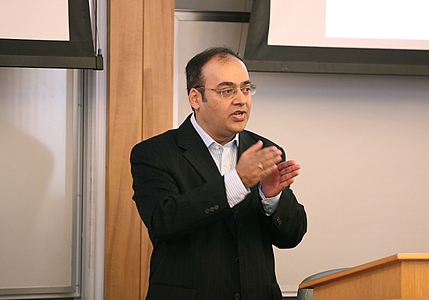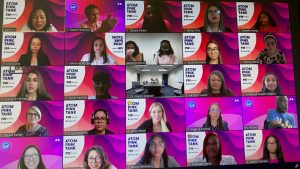The challenges posed by an increased role for healthcare information technology (HIT) are commanding the attention of policy makers, healthcare professionals and academics. Seen as a crucial way to lower costs, reduce errors and improve quality, HIT promises many improvements, but there are barriers to its implementation.
In a talk titled “Healthcare IT Renaissance: Challenges, Trends and Issues for Education and Research,” Samir Chatterjee, professor, School of IS&T, Claremont Graduate University, Claremont, California, summarized the situation and evaluated options for overcoming the complex obstacles.

“A leading researcher in HIT, Chatterjee started one of the first graduate programs in HIT in the United States and offered extremely helpful guidance to those of us who are preparing students for careers in IT,” said Kaushik Dutta, the organizer of the event and a member of the Decision Sciences and Information Systems Department (DSIS) at Florida International University (FIU).
Audience members take away the big picture and practical advice.
“The current climate for healthcare reform, combined with the explosive advances in information technologies versus its poor adoption and use in healthcare, has created the need for skilled individuals who can develop, understand, manage and integrate medical and administrative information, technologies and systems in organizations,” said Sara Rushinek, professor, Computer Information Systems, School of Business, University of Miami. “I was very interested in Chatterjee’s thoughts on how our universities can begin to address these issues.”
Maung Kyaw Sein, a former member of the DSIS department in FIU’s College of Business Administration and now professor of Information Systems at the University of Agder in Kristiansand, Norway felt the presentation had widespread implications.
“Health Informatics (HI) lies at the very heart of the issue, and when it comes to HI, I can think of few people, especially in academia, more informed and current than Chatterjee,” he said, “In a highly entertaining manner, he set before us the problem in a way that drove home the urgency of the situation, and then he explained the possible solutions—both existing and emerging—in a way that acknowledged that technology’s use is wrapped in the social, human and political context in which it is applied.”




